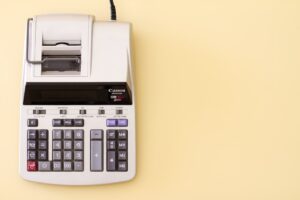What is a Pip in Forex Trading and How Does it Work?
If you’re new to forex trading, you may have come across the term “pip” and wondered what it means. Pip stands for “percentage in point” and is the smallest unit of measurement in the forex market. Understanding pips is essential for calculating profits and losses, as well as managing risk in your trades. In this article, we will delve into the concept of pips and how they work in forex trading.
What is a Pip?
In the forex market, currencies are quoted in pairs. For example, the EUR/USD pair represents the exchange rate between the Euro and the US Dollar. When you see a currency pair quoted, it is always in the form of a bid and ask price. The bid price is the price at which you can sell the base currency, while the ask price is the price at which you can buy the base currency.
A pip is the fourth decimal place in a currency pair’s exchange rate. For most currency pairs, a pip is equivalent to 0.0001, except for currency pairs involving the Japanese Yen, where a pip is equivalent to 0.01. For example, if the EUR/USD pair is trading at 1.2500 and it moves up to 1.2501, it means that the pair has increased by one pip.
How Does it Work?
Pips play a crucial role in calculating profits and losses in forex trading. Let’s say you open a long position on the EUR/USD pair at 1.2500 and close it at 1.2550. The difference between the entry and exit price is 50 pips. If you traded one standard lot (which is equivalent to 100,000 units of the base currency), each pip would be worth $10. Therefore, your profit on this trade would be $500 (50 pips x $10 per pip).
Conversely, if the trade went against you and you closed it at 1.2450, you would have incurred a loss of 50 pips, equivalent to $500. It is essential to understand the value of pips in monetary terms to accurately assess the potential risks and rewards of your trades.
Calculating Pips
To calculate the value of a pip for a particular currency pair, you need to consider the exchange rate and the size of your position. Here’s the formula:
Pip value = (0.0001 / Exchange rate) x Trade size
For example, let’s say you are trading the GBP/USD pair at an exchange rate of 1.4000, and your trade size is one standard lot. Using the formula, the pip value would be:
Pip value = (0.0001 / 1.4000) x 100,000 = $7.14
This means that for every pip the GBP/USD pair moves, you would either gain or lose $7.14, depending on the direction of the trade.
Pips and Risk Management
Understanding pips is crucial for effective risk management in forex trading. By knowing the value of each pip, you can determine the appropriate position size to limit your potential losses to a specific percentage of your trading capital.
For example, if you have a trading account with $10,000 and you are willing to risk 2% on each trade, you would set your maximum risk per trade at $200. If you are trading the EUR/USD pair and your stop loss level is 50 pips away from your entry price, you can calculate the position size as follows:
Position size = (Risk per trade / Stop loss in pips) x Pip value
Position size = ($200 / 50) x $10 = $400
Therefore, to limit your potential loss to $200, you would need to trade a position size of $400.
Conclusion
Pips are a fundamental concept in forex trading. They represent the smallest unit of measurement for currency pair movements and play a crucial role in calculating profits and losses. Understanding the value of pips in monetary terms is essential for effective risk management and position sizing. By grasping the concept of pips and how they work, you can enhance your trading skills and make informed decisions in the forex market.






